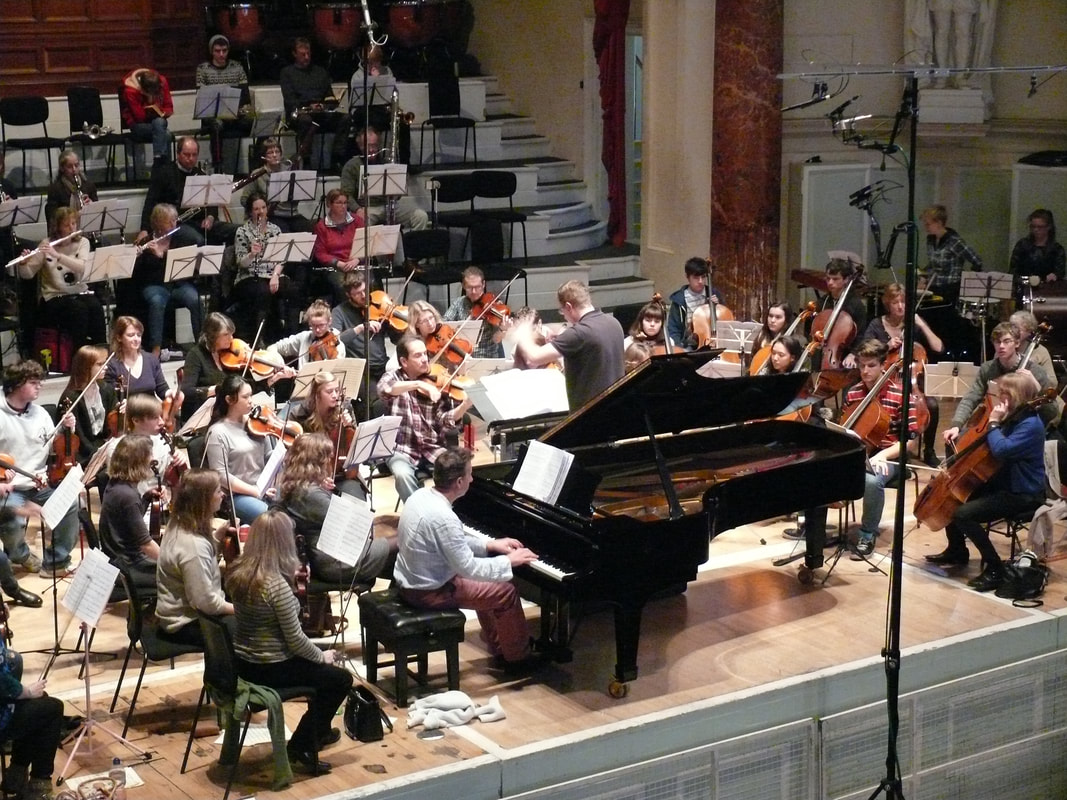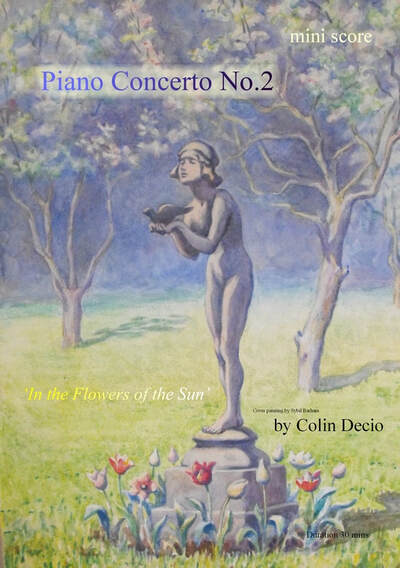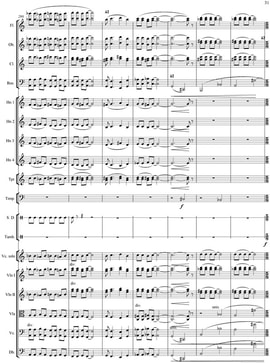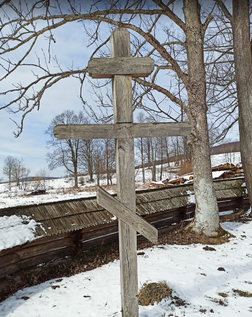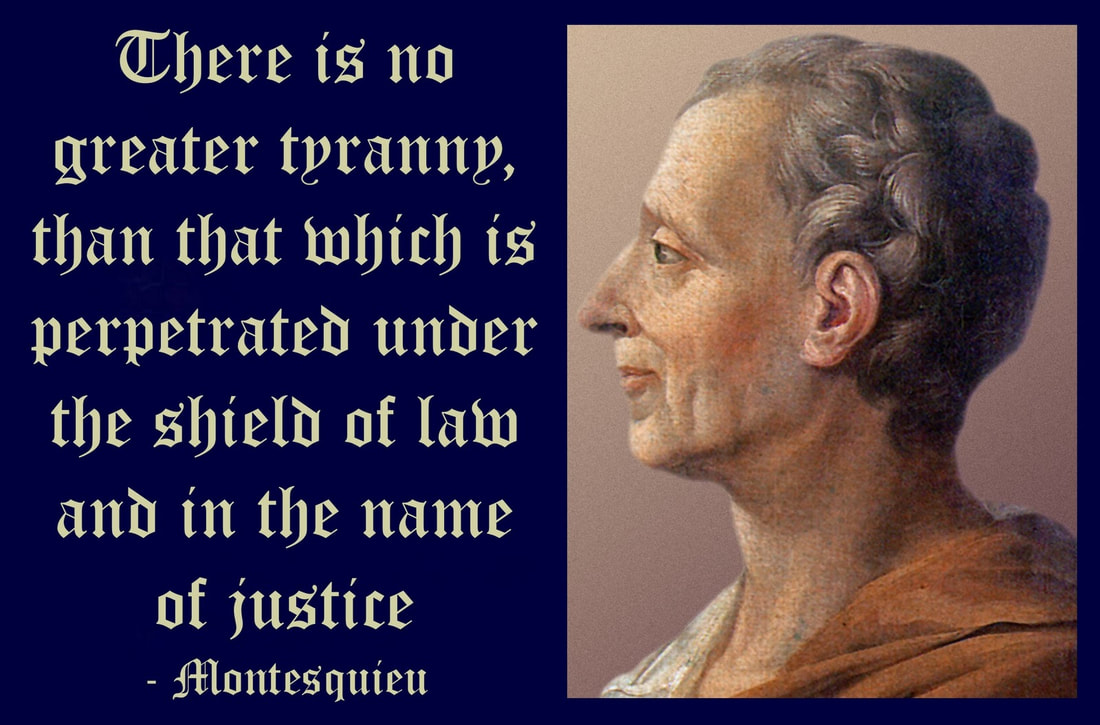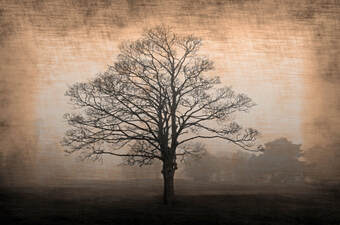Concertos
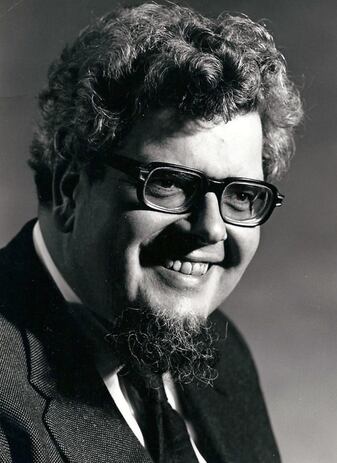 John Ogdon
John Ogdon
Piano Concerto No. 1
- 'in memoriam John Ogdon'
In six interconnected movements. Duration approx. 32 minutes. World premiere 31st January 2016.
Scored for: piano solo, 2 fl, 2 ob, 2 cl, 2 bsns, C. Bsn, 4 hns, 2 tpts, timps, 4 percussion: (BD, SD, sus. cymb, clshd cym, tgl, tam-tam, tamb,, celeste, whistle, xylo) - Full Strings.
In 1986 John Ogdon arrived at the Birmingham School of Music to give a lunchtime concert in the nearby Birmingham Midland Institute. With very short notice I was introduced to him by John Humphreys, my piano teacher (I was in my final year as a student of piano and composition). John Ogdon very politely asked me if he could include my newly written Piano Sonata No.1 in the concert that very day! I was absolutely delighted and spent a wonderful few hours with him working on the piece - I played to him and he played to me! As it happens, due to his huge programme that day, he only had time to perform the Waltz movement (the finale). But it was totally stunning to hear his interpretation, with some of the most wonderful playing I have ever heard, and a most sublime pianissimo that still lives with me to this day. Some years later after John had passed away I felt that I wanted to develop the work into a Piano Concerto and I have dedicated it to the musical genius -
John Ogdon.
(Piano Man by Charles Beauclerk is a superb biography of John Ogdon)
- 'in memoriam John Ogdon'
In six interconnected movements. Duration approx. 32 minutes. World premiere 31st January 2016.
Scored for: piano solo, 2 fl, 2 ob, 2 cl, 2 bsns, C. Bsn, 4 hns, 2 tpts, timps, 4 percussion: (BD, SD, sus. cymb, clshd cym, tgl, tam-tam, tamb,, celeste, whistle, xylo) - Full Strings.
In 1986 John Ogdon arrived at the Birmingham School of Music to give a lunchtime concert in the nearby Birmingham Midland Institute. With very short notice I was introduced to him by John Humphreys, my piano teacher (I was in my final year as a student of piano and composition). John Ogdon very politely asked me if he could include my newly written Piano Sonata No.1 in the concert that very day! I was absolutely delighted and spent a wonderful few hours with him working on the piece - I played to him and he played to me! As it happens, due to his huge programme that day, he only had time to perform the Waltz movement (the finale). But it was totally stunning to hear his interpretation, with some of the most wonderful playing I have ever heard, and a most sublime pianissimo that still lives with me to this day. Some years later after John had passed away I felt that I wanted to develop the work into a Piano Concerto and I have dedicated it to the musical genius -
John Ogdon.
(Piano Man by Charles Beauclerk is a superb biography of John Ogdon)
|
Piano Concerto No. 2
- 'In the Flowers of the Sun' In three movements. Duration approx. 36 minutes. Completed in July 2014. “Bodies fell from the sky into sunflower fields in full bloom, it was summer” 'This image burned into my mind. The fields were in my father’s home country of the Ukraine. It was here that commercial flight MH17 was brought down by a ground to air missile killing totally innocent men, women and children. This was the seed for my second Piano Concerto. But I wanted to create a work of beauty and not of horror. And in that, I think I succeeded'. Colin Decio Scored for: piano solo, 2 fl, 2 ob, 2 cl, b.cl, 2 bsns, 4 hns, timpani, strings, 1 percussion (tambourine) “Bodies fell from the sky into sunflower fields in full bloom, it was summer” - (eye-witness account) |
|
Tirthankara
For cello solo and orchestra. Tirthankara is through-composed in one movement. Duration approx. 16:00 Composed in 1987 Scored for: Cello solo - 2fl, 2ob, 2cl, B.cl, 2bsn, 4 hns, 2 tpts, timps, 3 percussion: (tub bells, snare drum, clashed cym, tamb, bass drum, sus cym, xylo), strings. Tirthankara (Sanskrit) - one who makes a place for your boat, from where it can take you toward the other shore." |
Violin Concerto
I – Largo, II – Moderato, III – Vivace, IV – Adagio
Duration 32:00
Duration 32:00
Scored for: Violin solo - pic, 2fl, 2ob, 2cl, 2bsn, c.bsn, 4 hns, 2 tpts, timps, 4 percussion: (SD, BD, sus cym, tam, tgl, tamb, crotales, tub bells, glock), strings.
The last movement was the first to be composed. The vision I had was of the old Orthodox church in the Ukrainian village of Bartne, where my father was born: it was to this same church that the Nazis took him overnight before being taken to Germany as slave labour. ‘The bells call to you. The church is wooden and the doorway low, meaning you have to duck to enter. Inside you see the priest and the iconostasis, and the smell of incense and the sound of the choir fill the air.’ This is the atmospheric setting of the music. My father’s free spirit is represented by the violin, whilst the traditional church order is in the brass chorales, and the congregation is represented by both the string and wind families.
Having completed this movement I knew I had to write more. I did not want to be too retrospective with the shape of the work in the traditional sense of a violin concerto. Rather, the violin should shine as soloist but also the orchestra would also have its moments: I did not want to tire the listener with too much solo violin (as I have found in the Sibelius and Mendelssohn violin concertos). I dispensed with the traditional cadenza and gave the violin a quasi-cadenza to end the work: my father’s spirit rushing to heaven.
The first movement begins with a slow canon, which gradually builds until the violin bursts in with great panache. The violin then joins the basses in a repeat of the opening canon and this again leads to another solo outburst. The wind now begin a manic dance, which becomes more and more energetic and involved. The movement ends with a repeat of the opening violin theme now on tutti strings: though the violin has the final say.
The second movement has a lighter more mercurial spirit, with violin harmonics, string pizzicatos, glockenspiel and bowed crotales; though the music is menacing at times. After a tutti forte, solo voices of the clarinet and oboe can be heard recalling a distant memory. This is taken up by the violin.
The third movement is a manic scherzo, which takes as its starting point the music from my second viola sonata. This is an urgent, frenetic rondo full of dance rhythms, though not without a sense of humour. The movement ends with a sense of hesitancy. The finale follows without a break.
Being half-Ukrainian the folk-like tunes and rhythms of my father’s country have always appealed to me. In this concerto I feel that I have more deeply embraced my roots. Dedicating the work to my father Maksym, who suffered cruelly at the hands of the Nazis, feels right. I’m sure he would have loved it.
composed January 2021
The last movement was the first to be composed. The vision I had was of the old Orthodox church in the Ukrainian village of Bartne, where my father was born: it was to this same church that the Nazis took him overnight before being taken to Germany as slave labour. ‘The bells call to you. The church is wooden and the doorway low, meaning you have to duck to enter. Inside you see the priest and the iconostasis, and the smell of incense and the sound of the choir fill the air.’ This is the atmospheric setting of the music. My father’s free spirit is represented by the violin, whilst the traditional church order is in the brass chorales, and the congregation is represented by both the string and wind families.
Having completed this movement I knew I had to write more. I did not want to be too retrospective with the shape of the work in the traditional sense of a violin concerto. Rather, the violin should shine as soloist but also the orchestra would also have its moments: I did not want to tire the listener with too much solo violin (as I have found in the Sibelius and Mendelssohn violin concertos). I dispensed with the traditional cadenza and gave the violin a quasi-cadenza to end the work: my father’s spirit rushing to heaven.
The first movement begins with a slow canon, which gradually builds until the violin bursts in with great panache. The violin then joins the basses in a repeat of the opening canon and this again leads to another solo outburst. The wind now begin a manic dance, which becomes more and more energetic and involved. The movement ends with a repeat of the opening violin theme now on tutti strings: though the violin has the final say.
The second movement has a lighter more mercurial spirit, with violin harmonics, string pizzicatos, glockenspiel and bowed crotales; though the music is menacing at times. After a tutti forte, solo voices of the clarinet and oboe can be heard recalling a distant memory. This is taken up by the violin.
The third movement is a manic scherzo, which takes as its starting point the music from my second viola sonata. This is an urgent, frenetic rondo full of dance rhythms, though not without a sense of humour. The movement ends with a sense of hesitancy. The finale follows without a break.
Being half-Ukrainian the folk-like tunes and rhythms of my father’s country have always appealed to me. In this concerto I feel that I have more deeply embraced my roots. Dedicating the work to my father Maksym, who suffered cruelly at the hands of the Nazis, feels right. I’m sure he would have loved it.
composed January 2021
Cello Concerto
‘You are still a fleshy, homely being that can be crushed by circumstance"
- Avatar Adi Da Samraj
Organ Concerto
|
'With water white is the great tree wet'
Duration 21:00 - new work
In one movement Scored for: organ solo & full orchestra - pic. 2 fl. 2 ob, c.a., 2 cl in Bb, bass cl, 2 bsn, c.bsn, 4 hns in F, 3 tpts in C, 2 ten trb, bass trb, tba, timps, 2 percussion: anvil, sd, bd, clshd cym, sus cym, tam tam, tamb, tgl, vibraphone, piano, harp, strings The spirit of man cannot be reduced by the vile scheming of unscrupulous men, be they in government or private enterprise. This is at the heart of my concerto for organ’'. C.D. |
‘With water white is the great tree wet’ – is a line from the Norse Poetic Edda, which speaks of the creation (and destruction) of the world.
Musically the earth begins to stir with the lowest pedal notes of the organ. Slowly the sap rises up through trunk and branches. A distant whale is heard in the ocean depths. Glissandi on most instruments describes the ascending sap, with clusters of notes describing leaves and berries. Suddenly the tree is revealed in glorious sunshine - the organ declares its presence. The Gjallrhorn calls (traditionally heralding the coming of Rangnarok). Then begins a Joik, a spiritual song sung here by the organ and then joined by the whole orchestra. After much orchestral merriment the music takes a darker turn describing man in his mortal suffering, played by deep brass and piano - 'One did I see in the wet woods bound'. The organ surges menacingly attempting to reassert its glory. A beautiful lament leads us back into an earlier theme based on bouncing thirds. An anvil is heard representing the dwarves of the earth - 'Many a likeness of men they made, the dwarfs in the earth, as Durin said' (Völuspá). The orchestra echoes the hammering then suddenly erupts with life as the whole orchestra plays tutti. This heralds a return to the Joik, which keeps stalling. Old age creeps in on wind echoed by the brass and in turn the organ. A low ‘A’ on contra-bassoon over which a solo cello plays light harmonics reminds us of how life began. The organ reappears in the sunlight and the Joik, a celebration of life, dances us to a finale of sounding trumpets and jubilant organ chords. Ygrdrassil, The Great Tree of Life, is alive and thriving. |
